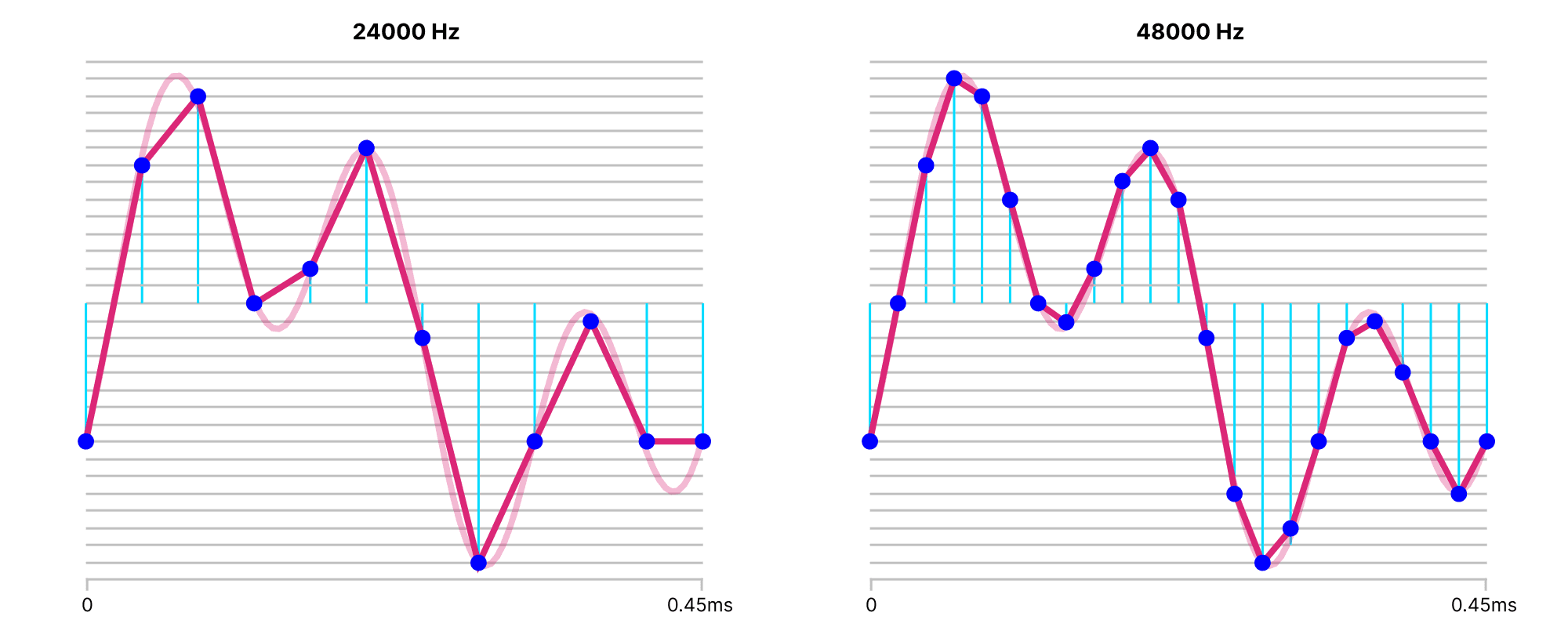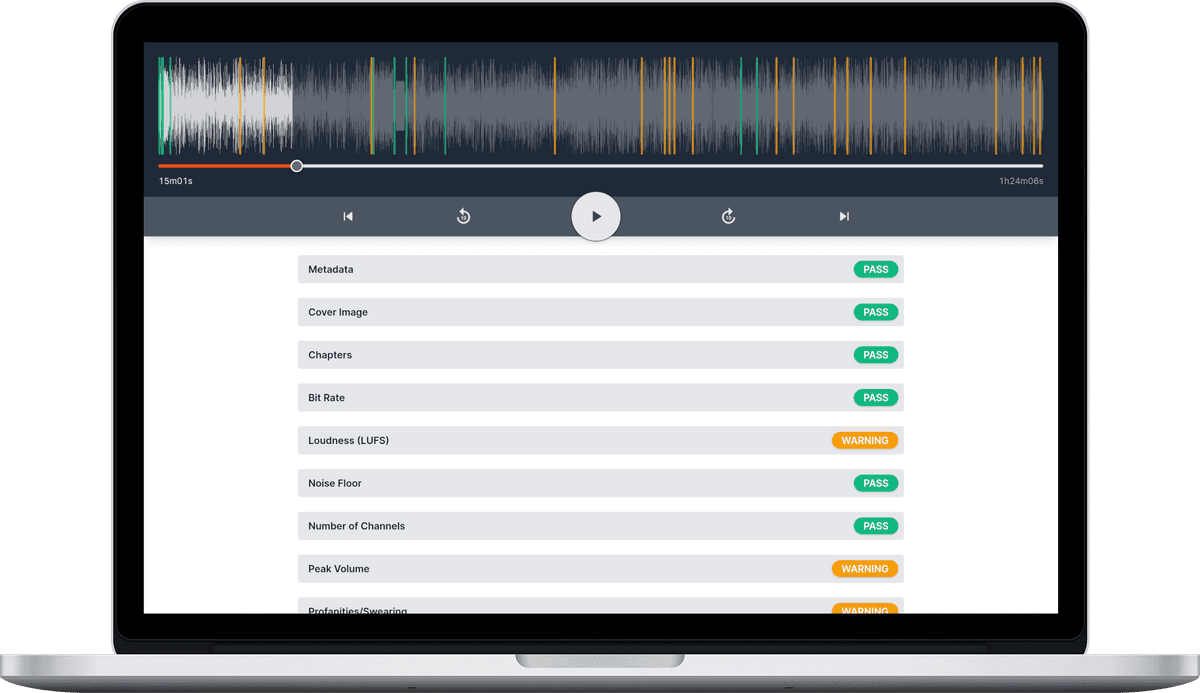Sample Rate
![]() Damian Moore, Last updated: 14 November 2024
Damian Moore, Last updated: 14 November 2024
When an analogue signal gets converted to digital it gets sampled or measured, usually several times a second. This sample rate here is in Hertz (Hz) meaning this is how many times it gets sampled per second. It is a crucial part of sound recording and reproduction.
A faster sampling rate makes for a more accurate representation of the original signal but requires more data storage space (and download time). The most common sample rate is 44100 Hz which was made popular with the introduction of the audio CD format. The Nyquist theorem dictates that the maximum frequency that can be represented is half the sample rate which would be 22050 Hz in this case. This is safely above the upper spectrum range of human hearing which is around 20kHz.
There are circumstances where it can be beneficial to use a higher sample rate but for a final export we believe 44100 Hz to be ideal and the perfect, high fidelity podcast sample rate. 48000 Hz is also a good choice as lots of professional audio equipment runs at that frequency and it would be detrimental to downsample it. There isn’t any reason for publishing at a higher sample rate than this though unless you are specifically targeting high-resolution audio.
When using your digital audio workstation software, you’ll want to make sure the sample rate is set appropriately from the start of the project and before recording from a microphone as you can’t fix it afterwards.

The diagrams above show the same analogue audio signal (curved light pink line) sampled at 24000Hz (left) and 48000Hz (right). The light blue vertical lines show the points in time when samples are taken and the signal is measured. The dark blue circles show the points that are encoded into the digital audio file. The grey horizontal lines are the available sample width levels.
With an increased sample rate, the digital signal (dark pink line) matches the analogue signal (light pink line) more closely and accurately.
Diagrams adapted from Wikipedia and shared under CC BY-SA 3.0 license.
Header photo: Richard Horvath

